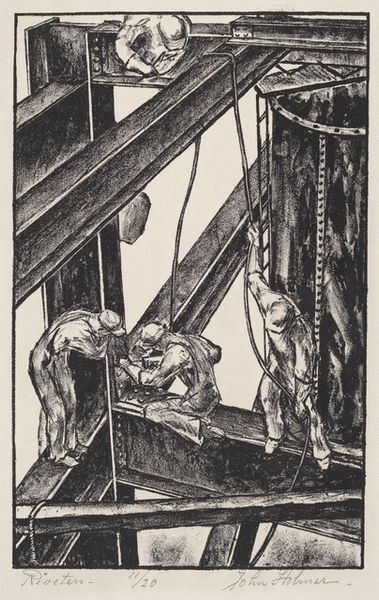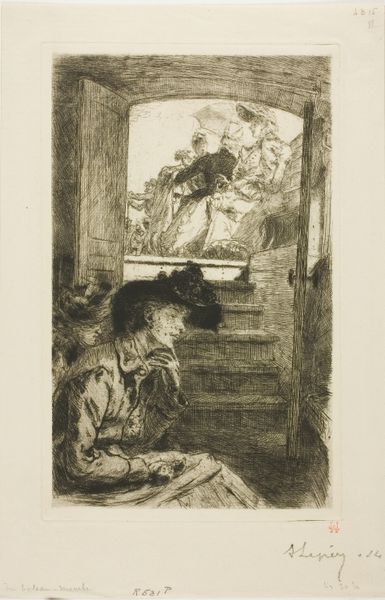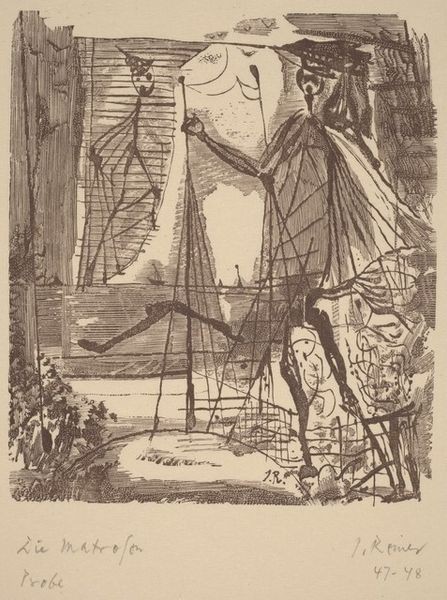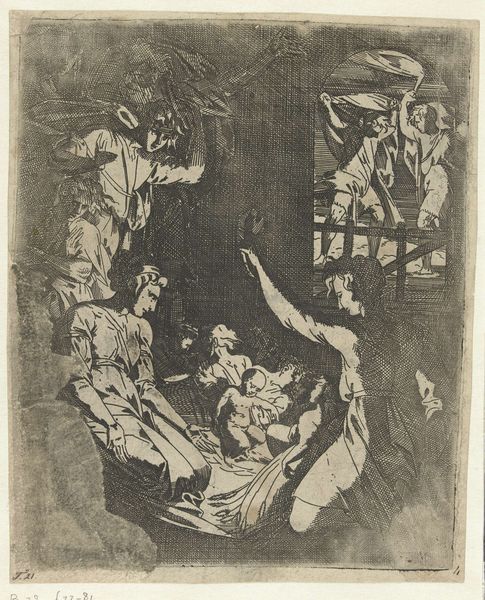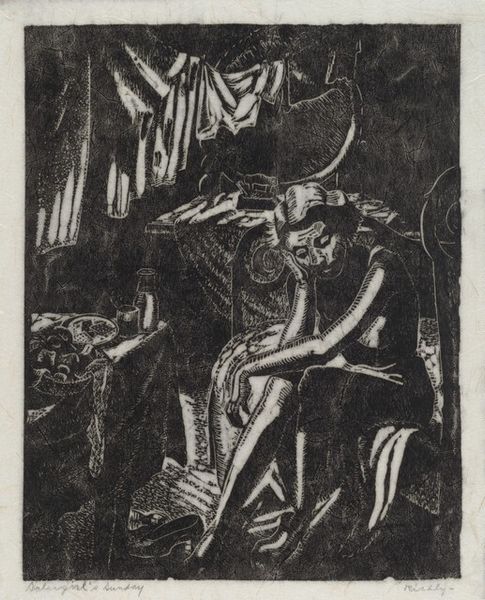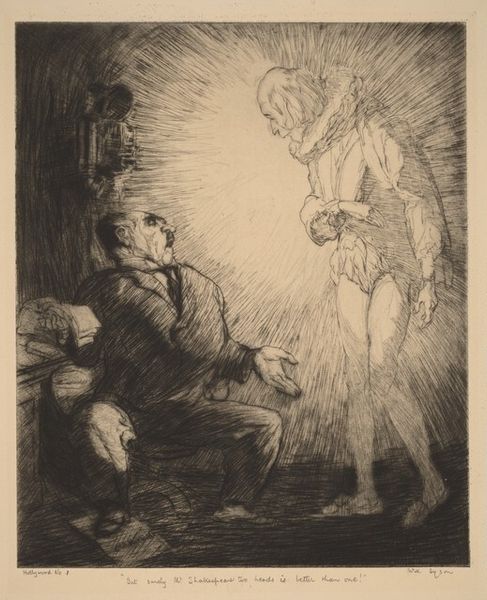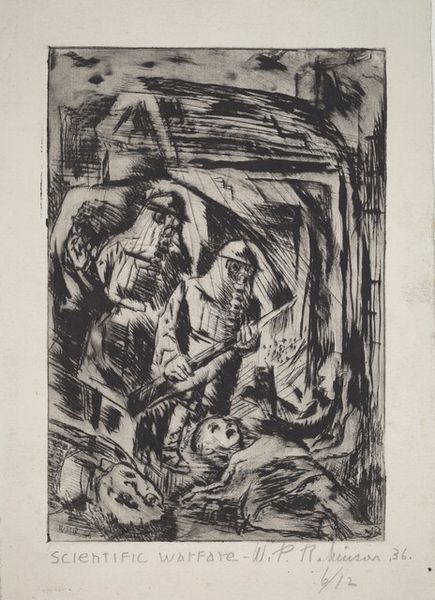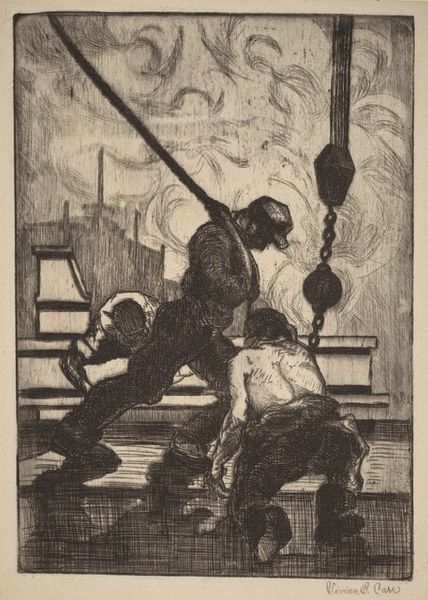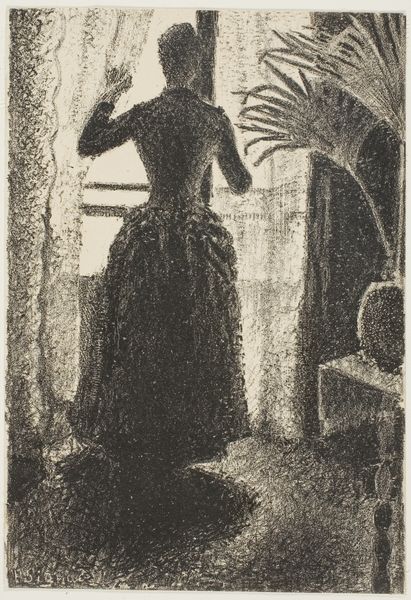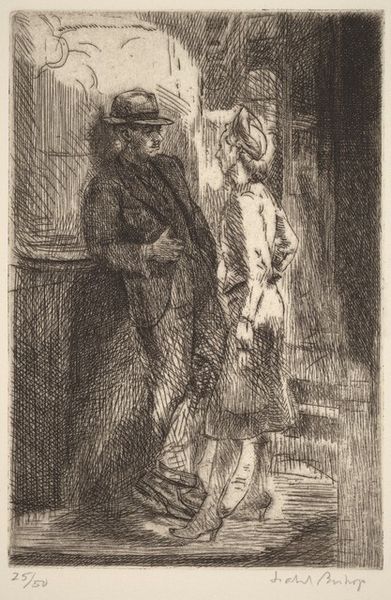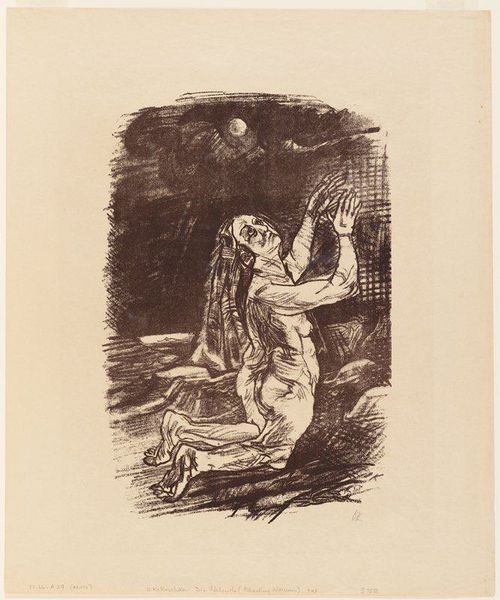
Dimensions: plate: 17.4 x 12.5 cm (6 7/8 x 4 15/16 in.) sheet: 28 x 24.6 cm (11 x 9 11/16 in.)
Copyright: National Gallery of Art: CC0 1.0
Curator: This etching by John Sloan, titled "Subway Stairs," dates to 1926. Editor: The first thing I notice is the almost chaotic energy captured in what would otherwise be a banal scene. There's a wonderful density achieved through line work, with real variation in mark-making. Curator: Sloan, associated with the Ashcan School, often depicted everyday life in New York City, focusing on the working class. The subway here provides an interesting case study of urban circulation in this period. Notice the throng moving up and down the stairs and how their class is evidenced by their garments and postures. Editor: Absolutely. The compositional strategy contributes to the piece. It's dominated by diagonals – the staircase itself and the glancing viewpoints heighten the sense of movement and perhaps even a subtle precariousness. Observe the almost mathematical arrangement of shadows defining space with almost no tonal range. Curator: And it's crucial to acknowledge how prints such as this functioned as democratized art objects. While a unique painting could be prohibitively expensive, an etching such as “Subway Stairs” allowed for broader accessibility, which democratized the distribution and viewership of art. What do you notice specifically in the depiction of women, here? Editor: I see a careful orchestration of line that emphasizes the textures of cloth and hair, bringing a delicate attention to surface. Despite the quick linework, it creates form for their bodies that is compelling. Curator: The subway environment itself— its grimy infrastructure—suggests the grit and realities of city life, far removed from the glamour associated with wealth and affluence of the roaring twenties, capturing a candid slice of modern urbanity, reflecting a dynamic social landscape where progress is tempered by lived experiences and inequality. Editor: True, the material is very stark here and it makes for powerful simplicity that evokes this kind of working city that may be often overlooked or disregarded for being "dirty" rather than just authentic and industrious. I'm struck now that the woman in the foreground carries what seems to be a parcel; an item likely containing her livelihood or her domestic comforts and both a burden and source of resilience. I now notice how the repetition of dark lines throughout provides tonal consistency and a sense of spatial cohesion amidst the fragmented forms. Curator: An astute observation that underscores Sloan's intention: to use line as a means of exploring and dissecting the intricate social and spatial configurations within urban spaces and the social stratifications within. Editor: Well, this has been enlightening. It's wonderful to unpack seemingly quotidian compositions and find these little treasures within them that both embody the art as its artifact and our humanity as its beholders.
Comments
No comments
Be the first to comment and join the conversation on the ultimate creative platform.
